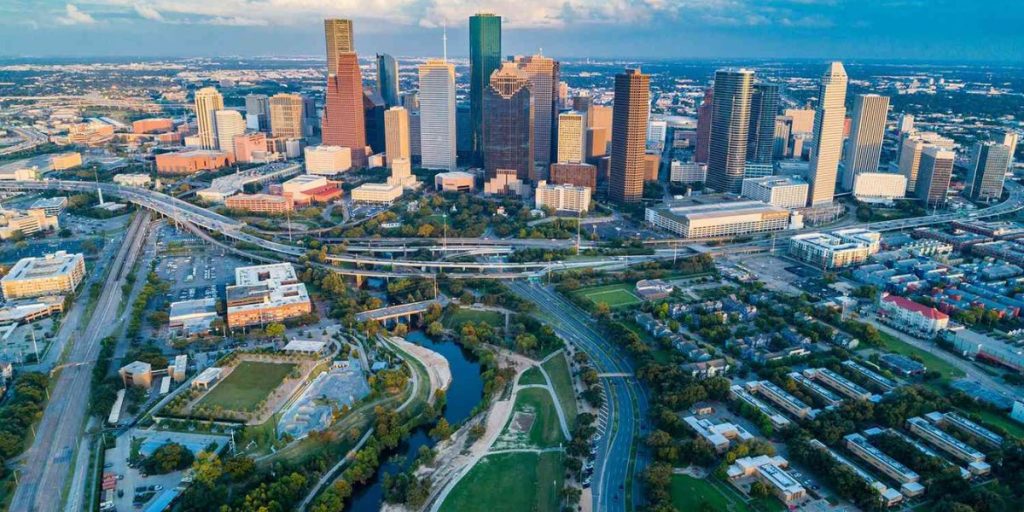Texas, renowned for its vast landscapes, vibrant culture, and diverse communities, also harbors areas with higher crime rates that might give residents and potential newcomers pause.
While the majority of the state is known for its safety, it’s crucial to acknowledge the existence of regions facing elevated crime challenges. In this article, we’ll shed light on the most dangerous place to live in Texas, unveiling the dark realities that some communities grapple with.
Unraveling the Data:
To determine the most dangerous place to live in Texas, we turn to crime statistics, law enforcement reports, and comprehensive analyses of various factors contributing to public safety. While crime rates can fluctuate over time, one city consistently stands out for its higher crime rates: Houston.
Houston: The Crime Hub?
Houston, Texas’s largest city, has unfortunately earned a reputation for being the most dangerous place to live in the state. According to recent crime data, Houston experiences higher-than-average rates of violent and property crimes compared to other Texan cities.

Factors contributing to this designation include a combination of socioeconomic challenges, a large population, and, in some areas, strained community-police relations.
Out of 2.33 million individuals, there are 2.67 violent crimes and 10.70 property crimes per 1,000 persons. In 2022, there were 6,241 violent crimes reported, including 399 murders.
In Houston, you have a 1 in 23 risk of becoming a victim of property crime, and 1 in 78 of becoming a victim of violent crime. Houston’s most violent neighborhoods include Sunnyside, MacGregor, Sharptown, and Greenspoint.
Violent Crimes
Houston faces notable challenges in combating violent crimes, including homicides, robberies, and aggravated assaults. Certain neighborhoods within the city report significantly higher rates of these crimes, creating concerns for residents and local authorities alike. Law enforcement agencies continue to implement strategies to address these issues, but the battle against violent crime persists.
Property Crimes
Property crimes, encompassing burglary, theft, and motor vehicle theft, are also prevalent in certain areas of Houston. Residents may find themselves grappling with the unfortunate reality of being victims of property-related offenses, necessitating increased vigilance and community engagement.
Root Causes
Understanding the root causes of crime is essential for implementing effective solutions. Factors contributing to the crime challenges in Houston include economic disparities, inadequate access to education and employment opportunities, and, in some instances, gang-related activities. Addressing these underlying issues is crucial for creating safer and more vibrant communities.

Community Initiatives and Solutions:
The Texas government is making Houston a better place to live by funding various projects. They are:
- Providing funding and incentives to improve public transportation, such as light rail, bus rapid transit, and bike lanes. The goal is to alleviate traffic and make it easier for people to get about.
- Supports the formation of management districts such as the Greater East End Management District. These districts seek to improve communities by restoring infrastructure, beautifying neighborhoods, organizing cultural events, and providing public safety services.
- Investing in programs for affordable housing, homelessness prevention, and neighborhood revitalization. Examples include the Houston Housing and Community Development Department, the Houston Homeless Initiative, and the Complete Communities Initiative.
- Encourage the development of walkable areas with a mix of uses and convenient access to public transit. Examples include the Midtown Innovation District, the East River Project, and Buffalo Bayou Park.
- Working with local organizations such as the Greater Houston Partnership, Houston-Galveston Area Council, and Houston Police Department. They are addressing the city’s issues and prospects, including economic development, regional planning, and crime prevention.
Conclusion:
While Houston faces challenges with crime rates, it is important to note that the majority of the city is safe, and many residents lead fulfilling lives in thriving communities. By understanding the contributing factors and supporting ongoing initiatives, residents and authorities alike can work together to create safer environments for everyone.